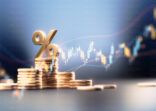An expected depreciation of the euro to the US dollar in the $1.20-$1.25 range bodes well for European equities, said Lombardo, in a client note.
“In addition, the valuation gap between the European and US equity market remains, justifying a `value’ call on the former. The risk of course is that this gap becomes structural if the underlying economic conditions do not improve.”
Lombardo had some skepticism about the ECB’s recently announced three arrows-type program, a mix of monetary policy easing, fiscal stimulus through long-term investments and supply-side reforms at the single country level.
Fiscal stimulus and structural reforms are hampered by political opposition within the European electorates, he said.
“Therefore, we believe that the main effect of the measures recently announced by the ECB will be felt through a depreciation of the euro, which is likely to be seen in the 1.20-1.25 range versus the US dollar.”
Pioneer maintains a long position on European equities, based on the fact that possible surprises, such as the announcement of a fiscal stimulus plan and of strong national reforms are positive, “while the deflationary scenario where the ECB is the only game in town is already somewhat priced in”.
The top Eurozone funds over the past year:

Global structural reform trend
In Asia, Pioneer has positive view on China, where financial and fiscal reforms are proceeding. “This, in our view, will allow the development of a more market-friendly environment.”
Housing sector and credit risks persist, however, even though Chinese authorities are working to bring them under control, he added.
India is also attractive to investors, though mainly in promise. That will be tested as Prime Minister Narendra Modi is called upon to deliver on the implementation of structural reforms.
The theme of structural reform is not only in emerging markets, he said. It ripples through Europe, Japan and the US, where his major concern is related to the outlook for capital expenditure, “the main missing element for a sustainable and durable growth pattern”.
“The nominal level of net investments is no higher than the level of the late ’90s (15 years!), which means that the real level is down both in absolute terms and relative to the size of the economy. This is the case despite a deteriorating and aging infrastructure.”
Credit has been utilized for financial, rather than industrial improvements.
“Companies have largely invested their earnings in dividends and buybacks while investment for future growth seems to be a second priority. Over 80% of the earnings of the S&P 500 companies have been used in dividends and buybacks over the last five years. This has certainly benefited shareholders and corporate managers, but not the long-term growth outlook.”
Because the implementation of structural reforms cuts through emerging and developed markets, and countries will proceed with varying levels of effectiveness, “it could lead to interesting individual country investment cases in the next few years.”
Pioneer’s advice is to keep portfolios “as diversified as possible while spending part of the risk budget over time to buy protection against the most unfavorable alternative scenarios”.
















